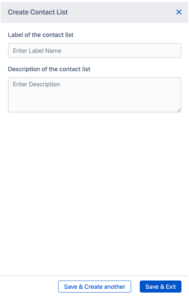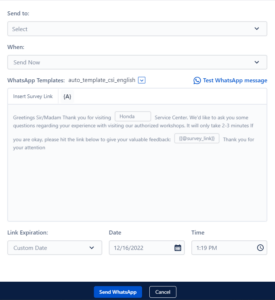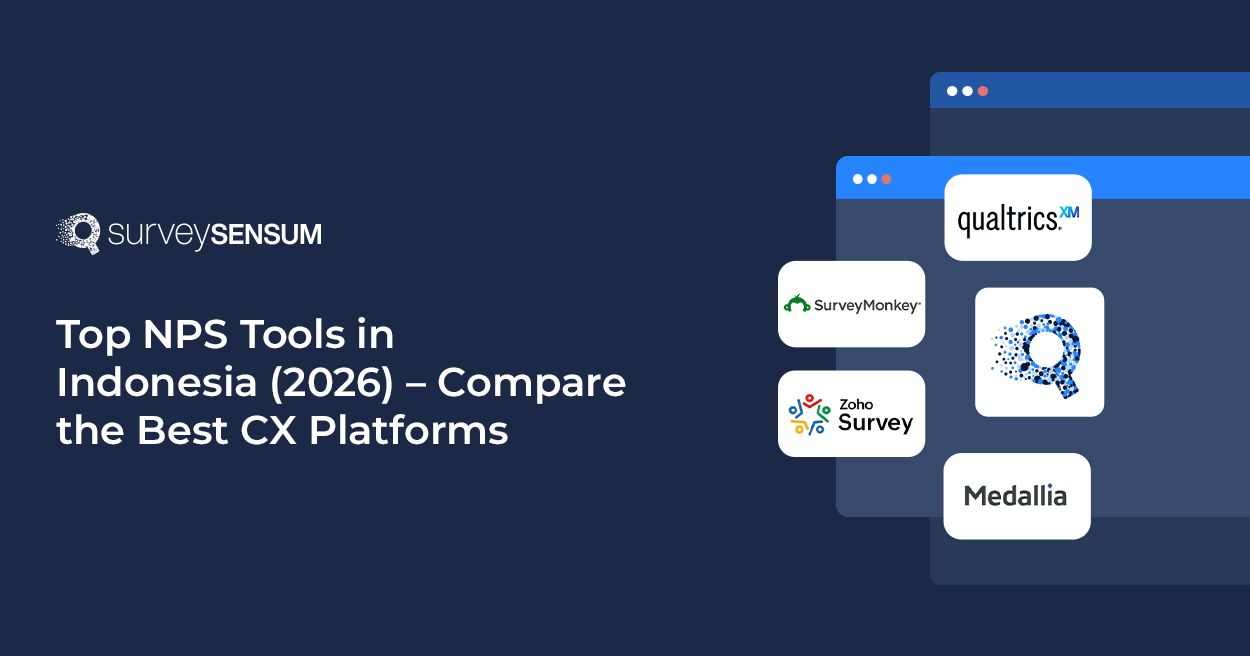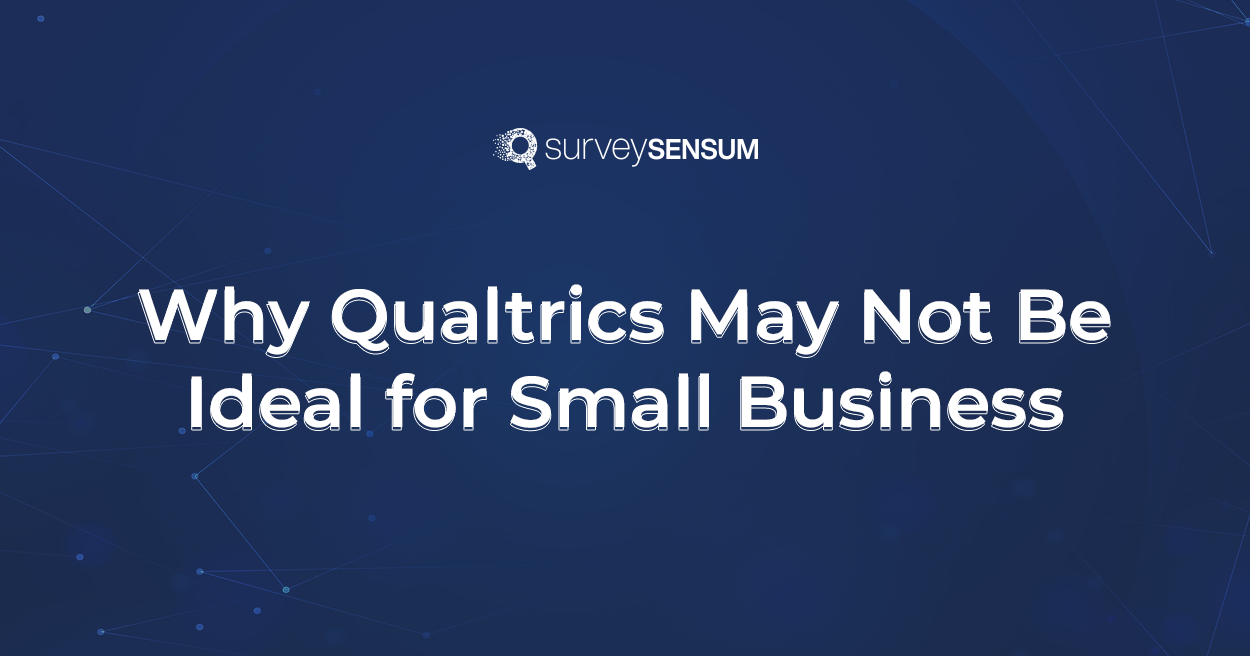

Do you remember receiving emails from brands that you shopped with, asking you
- How likely will you recommend the particular product to your friends and colleagues?
- How likely will you recommend their brand to your friends and colleagues?
It’s called Net Promoter Score (NPS).
But, why bother with all this?
Well, a positive NPS score means lots of people are raving about your company, which is like free advertising. It also suggests the company is treating its customers well. But if the score isn’t so great, it’s a sign that the company needs to up its game and make things better for customers.
In order to understand where you stand in the matters of customer satisfaction you need to measure your NPS by creating an NPS survey, sending it across multiple channels, and analyzing the gathered data.
Fret not! With this blog learn how to create an NPS survey in the easiest way possible and also understand the importance of NPS methodology.
So, let’s dig in!
What Is Net Promoter Score (NPS)?

NPS, short for Net Promoter Score, is a metric designed to gauge customer loyalty and helps in strategizing to improve customer retention and loyalty. It revolves around a single NPS scale question — ‘On a scale of 0 to 10, how likely are you to recommend our product to others?’
Based on their responses, customers are categorized into:
- Promoters (score 9-10) – your diehard fans
- Passives (score 7-8) – neither your fans nor haters
- Detractors (score 0-6) – not so thrilled about you
You now understand what NPS is but why is it important? Let’s understand.
Why is NPS Important?
Here’s why is NPS important when it comes to improving customer satisfaction:
- Simplicity and Speed: NPS is a simple and quick survey that can be easily administered to customers, making it a convenient way to gather feedback.
- Predictor of Business Growth: A high NPS means good business growth. Promoters are more likely to stay loyal, increase their spending, and refer new customers, driving organic growth and reducing customer acquisition costs. They can also be turned into brand advocates.
- Identifying Areas for Improvement: By analyzing feedback from detectors and Passives, businesses can pinpoint areas that require improvement and take proactive steps to close the feedback loop in time.
- NPS Benchmarking: NPS scores can be used to compare a company’s performance against industry benchmarks and its own historical data. This helps companies track their progress over time and identify areas that need attention. Too many stats are there – some you mentioned in NPS in fintech – mention those
You now understand what NPS is and why it is important, let’s now understand what type of questions you can ask in an NPS survey.
What Questions Can You Ask in NPS Surveys?
There are generally two types of NPS questions included in an NPS survey:
1. Loyalty Question (Close-ended)
This is the heart of the NPS survey, where you ask customers to rate their likelihood of recommending your company’s products or services. This is a close-ended question and provides a quantitative answer. The customer is asked to rate on a scale of 1-10 and according to the rating they give they are placed in promoters, detractors, or neutral groups.
→ On a scale of 0 to 10, how likely are you to recommend our product to a friend or colleague?
The ratings place customers into three groups:
- Promoters: This group of customers gives you a rating between 9-10 and they are your fans
- Passives: This group of customers gives you a rating between 7-8 and are neither sad nor happy with your product.
- Detractors: This group of customers gives you a rating between 0-6 because they are not happy with your product.
2. Follow-Up Question (Open-ended)
Once you’ve got the rating, the NPS follow-up question digs a little deeper. It’s an open-ended question meaning customers can provide detailed feedback.
This question helps you understand the ‘why’ behind the rating. It gives customers a chance to express their feelings, share experiences, and provide suggestions for improvement. This is especially useful in understanding the ratings of detractors.
With SurveySensum’s AI-powered survey builder, you can seamlessly personalize these follow-up questions – ensuring you gather the right insights from every customer. The platform automatically shows open-ended questions specific to the NPS score provided by the respondents. For example, for
→ Promoters (9-10): Please tell us what you like most about our product.
→ Passives (7-8): How can we improve your experience?
→ Detractors (0-6): What was missing in your experience with our product?
So, let’s now see how to create an NPS survey with SurveySensum.

Turn customer opinions into strategic growth opportunities with SurveySensum. Schedule a demo now to see how our NPS tools help you prioritize customer experience.
How to create an NPS survey ( Step-by-Step Guide)?
You can create an effective NPS Survey with SurveySensum in 2 minutes with its built-in template. Here’s how –
STEP 1: Login to SurveySensum
To begin creating an NPS survey with SurveySensum, simply log in to your account or create an account with your email address.

STEP 2: Choose the NPS Template
Choose the NPS survey template.

STEP 3: Customize the NPS Survey Template
Customize your NPS survey with the inbuilt template, as per your brand requirements.

STEP 4: Share Your Survey Through Multiple Channels
Sharing your surveys through the right channels is an important part of the process.
Identify which channels your customers prefer. This will help you boost NPS survey response rates.
For example, people in India prefer WhatsApp surveys, on the other hand, people in the US prefer NPS email surveys and SMS surveys.

STEP 5: Create a Contact List
Now that your survey is created, share it with your customers but first create a contact list. For example, if you want to send WhatsApp surveys then you need to create a contact list of your customers.

Now choose the list of your customers and click on ‘Send WhatsApp’.

STEP 6: View Reports on the Dynamic All-in-One Dashboard
Now it’s time to analyze, monitor, and take action according to the reports.
SurveySensum provides a powerful and exclusive dashboard where you can view reports of all your surveys. You can also customize this dashboard based on your goals and objectives. You can choose which part of the report you want to monitor. This is what your NPS survey dashboard will look like on SurveySensum.

You can also create NPS reports that you want to view on your dashboard based on your preferences.
With SurveySensum’s AI-powered survey builder, you can create personalized, engaging surveys in minutes. Say goodbye to manual survey design and let AI suggest the best questions and formats to suit your needs!
Now, let’s discover some NPS survey best practices.
Best Practices For Designing an Effective NPS Survey
Here are some best practices you can follow to design an effective NPS survey.
1. Keep It Simple
Simplicity is the cornerstone of an effective NPS survey. At its core, the survey revolves around a single question – “On a scale of 0 to 10, how likely are you to recommend our product/service to a friend or colleague?”
This simplicity encourages participation, with studies showing shorter and simpler surveys that start with multiple-choice questions have an 89% completion rate on average as compared to the ones that start with complicated open-ended questions. So, avoid overloading the survey with additional questions. Instead, include only one or two follow-ups to gather more specific insights without overwhelming respondents.
2. Include Qualitative Questions
While the core of the NPS survey question is to capture the numerical score, the true value lies in understanding the “why” behind the score. By understanding that your customers gave you that particular score you can uncover underlying concerns and design strategies to better meet your customer’s expectations.
Open-ended responses help identify recurring pain points among detractors or highlight strengths appreciated by promoters. Tailoring the follow-up questions further – such as asking detractors “What can we do to improve?” – ensures feedback is both targeted and actionable.
3. Survey Timing
The timing of the NPS survey can significantly impact the quality of responses. Surveys sent immediately after a key interaction, such as completing a transaction or resolving a customer service issue, tend to capture customers’ most recent experiences. However, avoid sending surveys during stressful periods, such as when an issue remains unresolved, as this could bias responses negatively.
4. Use a Consistent Rating Scale
Maintaining the standard 0–10 scale for the core NPS question ensures comparability across industries and time periods. Consistency is crucial, as customers familiar with the NPS methodology can respond more quickly and confidently. Briefly explain the NPS scale, especially for new users, to avoid misinterpretations, for example, clarifying that 0–6 indicates dissatisfaction while 9–10 signifies strong brand advocacy.
Let’s now see the process of calculating the NPS score.
How To Calculate NPS score?

You might be wondering, ‘How does this Net Promoter Score thing actually work?’ Well, it’s pretty straightforward and surprisingly simple.
And here’s the formula: NPS = % Promoters – % Detractors
Now, let’s break it down step by step:
- Promoters: Calculate the percentage of your customers who are promoters. Add up the number of customers who gave you a 9 or 10, divide that by the total number of responses, and multiply by 100. This gives you the percentage of promoters in your customer base.
- Detractors: Do the same for detractors. Count how many customers rated you between 0 and 6, divide it by the total responses, and multiply by 100. This gives you the percentage of detractors.
- NPS: Finally, subtract the percentage of detractors from the percentage of promoters. This gives you your Net Promoter Score.
Here’s how to calculate NPS with an example for better understanding:
Let’s say you conducted an NPS survey with 100 respondents, and their scores are distributed as follows:
- Promoters (9-10): 60 respondents
- Passives (7-8): 20 respondents
- Detractors (0-6): 20 respondents
Calculate the Percentages:
Promoter Percentage: (60 / 100) * 100% = 60%
Detractor Percentage: (20 / 100) * 100% = 20%
Calculate the NPS:
NPS = Percentage of Promoters – Percentage of Detractors
NPS = 60% – 20% = 40
So, in this example, the Net Promoter Score (NPS) is 40.
Calculate Your NPS For Free With SurveySensum
Turn NPS Feedback Into Actionable Insights
Here’s a straightforward guide to help you take action on your gathered NPS insights:
1. Analyze and Segment The Data
You have gathered your NPS feedback and now it’s time to dive deep into it and segment your data which will help you in understanding the distribution of your customer sentiments.
With SurveySensum’s NPS software you can segment your NPS data based on demographics, purchase behavior, or any other relevant criteria. This allows you to identify patterns, identify underlying reasons behind the feedback, and tailor your actions to different customer groups.

2. Identify The Areas For Improvement
With insights in hand, identify the areas that could have the most significant impact on customer satisfaction and loyalty. Focus on addressing concerns or enhancing features that affect a large portion of your customer base.

SurveySensum’s Text Analytics enable you to analyze qualitative feedback for recurring keywords and sentiments. Categorize feedback into themes like product quality, product design, customer service, pricing, etc to identify customer sentiments and take prioritized action.
This strategic approach ensures you’re investing resources where they matter most.
3. Close The Feedback Loop
Now that you understand where the issues are it’s time to take action to solve those issues and close the feedback loop.
- Prioritize issues based on their impact on customer satisfaction and the effort required to resolve them.
- Inform concerned departments of the issues. This ensures accountability and progress tracking. For example, if there is an issue with the product alert the product team to take charge to solve the issue.
- Break down larger actions into smaller milestones with deadlines. This allows you to track progress and maintain a steady pace toward implementation.
- Once you have resolved the issue, communicate the action taken to your customer. This will ensure that your customers are aware of the changes and that they feel valued for their opinions.
Here’s an example of how a B2C company, Olay communicated the resolved issue with its customers in a unique way.

4. Monitor and Measure: Gauge the Impact
As you roll out changes based on NPS insights, continuously monitor the impact of these adjustments.
Establish KPIs to measure progress in each improvement area. Regularly track and analyze data to ensure you’re on the right track. If certain actions aren’t yielding the desired results, modify your strategies accordingly.
Conclusion
Creating NPS surveys with effective NPS software tools like SurveySensum helps you establish a bridge between your company and your customers.
Through the simplicity of a single question, you have the ability to get insights into what your customers are experiencing. NPS surveys aim not only to improve your customer satisfaction but also to increase your customer loyalty and decrease any potential churn.
It’s crucial to remember that NPS is not merely a measurement – it’s a catalyst for positive change within your organization. As you harness the insights from these surveys, you set a course for continuous improvement.
So, launch your surveys with SurveySensum’s NPS software and gather feedback in real time and close the feedback loop.
Frequently Asked Questions
An NPS (Net Promoter Score) survey is a customer feedback tool designed to measure customer satisfaction and loyalty. It revolves around one key question: “On a scale of 0 to 10, how likely are you to recommend our product/service to a friend or colleague?”
Companies use NPS surveys to track customer loyalty, identify areas for improvement, and benchmark their performance against industry standards.
To obtain accurate and meaningful responses, consider these best practices:
- Send Surveys at the Right Time: Ensure timing aligns with key customer interactions, such as after a purchase or a customer support resolution.
- Keep It Simple: Limit the survey to the core NPS question and a single open-ended follow-up to avoid overwhelming respondents.
- Personalize the Survey: Address customers by name and reference their recent activities to make the survey relevant.
- Ensure Anonymity: Let customers know their responses are confidential, which encourages honesty.
- Optimize for Mobile Devices: Many customers prefer responding via smartphones, so ensure the survey is mobile-friendly.
- Avoid Over-Surveying: Limit the frequency of surveys to prevent customer fatigue.
There are many customer feedback survey tools available in the market for creating NPS surveys like SurveySensum, SurveyMonkey, SurveySparrow, Qualtrics, etc. However, if you don’t want to limit yourself to designing and want to delve deeper into the insights then go for SurveySensum as this tool leverages AI and machine learning models to uncover recurring themes and customer pain points and provide you with detailed and analytical insights on where action is required.

















